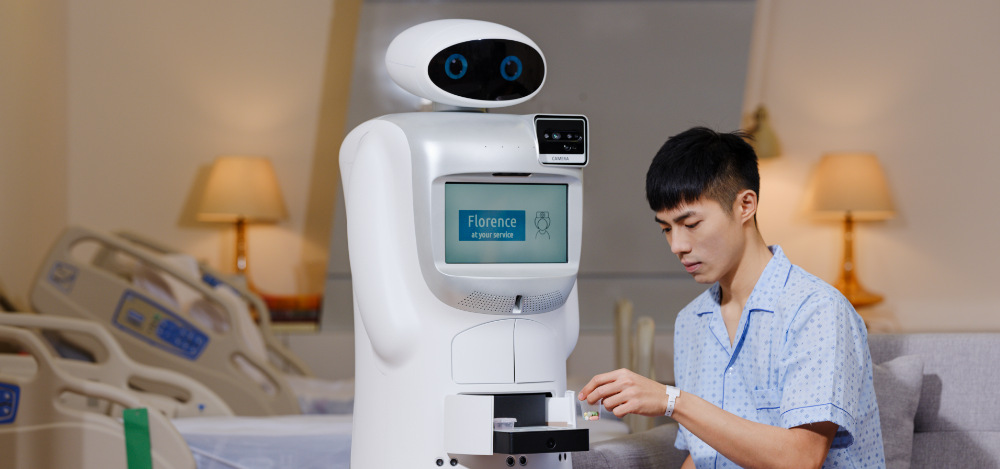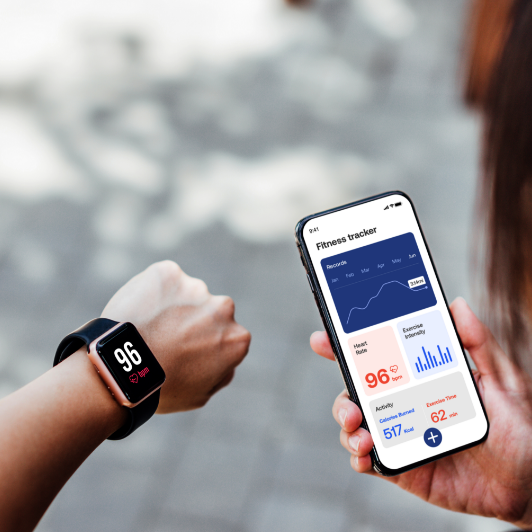Published: Sep 09, 2022
can robots really save healthcare?
Introduction
Healthcare workers around the world are chronically overworked. Nurses, for instance, often work long shifts and are expected to carry out a plethora of tasks, from dispensing medication to monitoring vital signs to keeping medical records up to date to assisting with medical procedures, and much more.
The Covid-19 pandemic has put these workers under even greater strain, with many working even longer hours than usual while putting themselves at considerable risk of infection. A July 2021 study conducted by the Institute of Mental Health found that Singaporean GPs were experiencing higher levels of anxiety, burnout, and depression than before the pandemic. A similar situation in the United States has led to 32 percent of registered nurses considering leaving direct patient care, according to a study conducted by McKinsey.
Things are only likely to get more challenging for the healthcare sector. The World Health Organisation (WHO) estimates that the world will see a shortfall of 18 million healthcare workers by 2030. While this shortfall will disproportionately affect low- and middle-income countries, all countries will to some extent face “difficulties in the education, employment, deployment, retention, and performance of their workforce,” the organisation says.

However, thanks to great strides made in the field of robotics and artificial intelligence (AI) in recent years, robots are increasingly being deployed in the healthcare sector to help relieve the burden on human workers. Indeed, robots are doing things like dispensing medication, disinfecting wards, carrying supplies or equipment, updating records, keeping patients company, and even assisting in surgical procedures.
While there is understandable concern from some parties about machines replacing humans in the workforce, it is clear that there are practical and emotional gains for healthcare workers with robots working alongside them in a supporting capacity.
Putting care back into healthcare
Robots are transforming the nursing profession. One of the greatest benefits they provide is the ability to handle repetitive, laborious, and time-consuming tasks.
NCS is currently conducting trials of a robotic nursing assistant called Florence with Singapore Public Hospitals. Florence is able to perform a range of tasks, including measuring patients’ vital signs, synchronising patients’ data for real-time follow-up, and delivering medicines and snacks.

Florence can independently navigate to the patient bedside in busy wards and interact with patients and staff via speech or through the built-in touchscreen.
Robotic nursing assistants like Florence will become very valuable in healthcare institutions in the near future as robots can work longer shifts without needing sleep or food, treat all patients equitably, and can safely attend to patients infected with contagious diseases without risk of infection. Moreover, NCS can deploy its Robot Health Manager to perform remote surveillance to detect unwell persons using audio and video analytics (for quick isolation or attention). The self-navigating robot identifies Persons of Interest (POI), provides contactless monitoring of vital signs including temperature and heart rate, and uses sound and gesture sensors to detect coughing.
In essence, robots enable healthcare professionals to apply themselves more fully to their main role — providing care. By taking on menial jobs like cleaning, record keeping, monitoring vitals, and distributing medicines, robots free up healthcare workers’ time and energy for the aspects of care that require a human touch. Jim Lim, Healthcare Sector Lead at NCS commented that during the trial of Florence, preliminary findings indicated a 17 percent increase in nursing productivity.
How can the healthcare sector plan for this transition?
It is inevitable that robotics will play an increasing role in healthcare over the coming years. Robots and automation solutions should be deployed to tasks that are best suited to their capabilities — for example, carrying out monotonous or physically demanding tasks — while leaving the healthcare workforce to concentrate on the “human touch” aspect of healthcare services.
In particular, healthcare providers should consider using robots for the following use cases:
- Checking up on patients regularly and performing non-medical tasks. This reduces the costs of care and improves patient satisfaction by ensuring that they can be attended to at all times.
- Robotic medication dispensing systems which assist pharmacists by automating much of the prescription preparation process, thereby reducing waiting times and freeing up pharmacists for the more social aspects of their job, such as providing medical advice.
- Automating disinfection/cleaning in healthcare facilities. This increases staff productivity and ensures high standards of hygiene are maintained.

What’s needed
The Singaporean government wants to make the country a “living laboratory” for the development of AI solutions. In an interview for GovInsider, Dr Goh Han Leong, Principal Specialist, Data Analytics & AI, IHiS, points out that the country is well positioned to make this vision a reality thanks to a good regulatory landscape, healthy synergy between various government bodies, and a highly tech-savvy population.
To successfully incorporate robotics and intelligent technologies in the healthcare system, it is important that private and public stakeholders, including tech developers, medical experts, and policymakers, collaborate toward achieving the common goal of sustainable, value-driven healthcare.
Joo Cheng Lim, Director Product Engineering at NCS, says that “Robotics in patient care will very likely revolutionise the way we deliver care. We must be innovative and proactively involved in charting the path into what skills robots provide, and how robots are incorporated into the patient care ecosystem.”
Jim agrees that robotics will have a positive impact on healthcare. “With wider deployment of 5G technology, robotics and AI will be contributing more use cases in healthcare, such as robot-assisted surgery,” he says. “We believe that robotics will be able to help in treating more patients and addressing the talent crunch situation. Definitely more treat than threat for healthcare professionals.”



